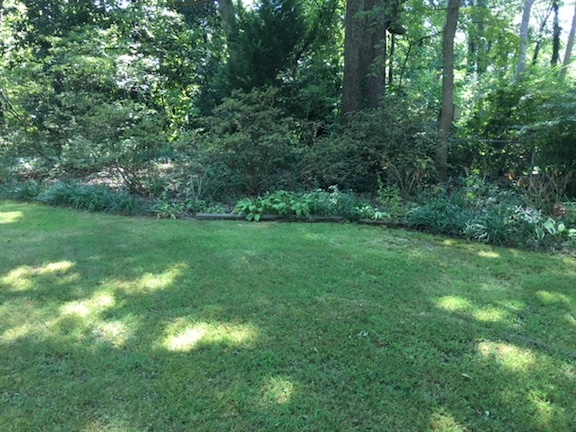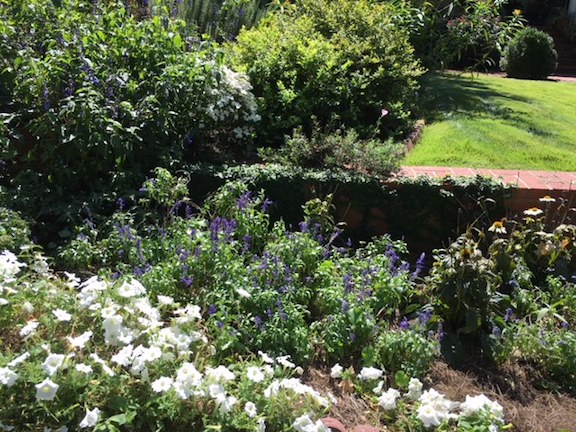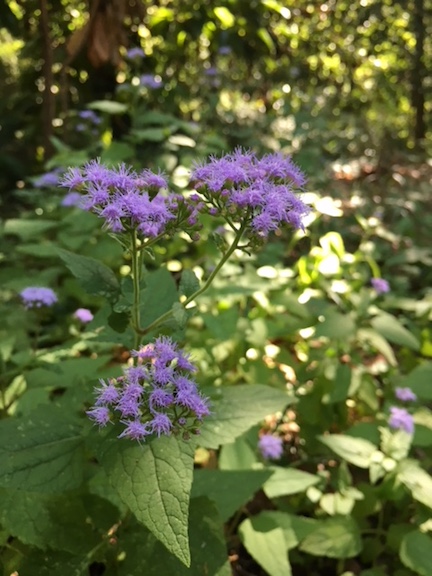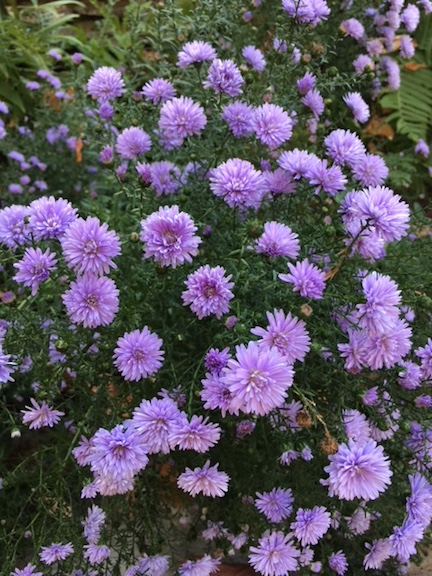It’s difficult to tell, these days, what is turning brown and dying back for the season and what is turning brown and dying for all time. My garden looks pretty dismal. Weeks with no rain and temperatures continuing to hover around 90 degrees have taken their toll. I don’t mind the annuals dying off, they’ve had their say, done their good deed, lived their lives…..it’s the shrubs and particularly the trees that I’m worried about.

If I could depend on it being hot and dry, I could plant for that but along with increasing temperatures comes erratic and extreme weather patterns and they are more difficult to plan for. So, I’m looking for plants that (usually) like hot weather but will withstand occasional extremely low temperatures. And, plants that (usually) like dry conditions but will withstand periods of heavy rain and flooding,
Ummm, the list is getting smaller. All I have to do, though, is to look at my back yard to see what is still thriving and what looks like it’s on its last leg. (Since I can’t irrigate everything, I have chosen to keep the front watered – it’s a smaller area, easier to water and it pleases me to show off my best garden to the neighborhood.)

My back yard pretty much has to exist on its own. And what still looks good are most of the native plants, a few weeds and some hardy, beloved ornamentals. Bee balm, phlox, green and gold and black eyed Susans, asters and the native ferns and grasses seem unfazed by the heat and drought. Lenten rose looks pretty perky, as does the slightly weedy ageratum. Good old – fashioned green hostas continue to look fine but the more delicate, unusual hostas all have some leaves that are turning brown and crinkly. My hydrangeas, marginal even in the best of times, have lost most of their leaves. Can I revive them? Probably. Should I? Probably not. They are not the best choice for the times. My Japanese maples all have some leaves that are turning brown and dropping – I pray that it’s a survival technique and that they’ll all come back next spring.

So, the question is, where do I go from here? How do I best garden in these times of erratic and extreme weather patterns? I think it’s a question of both what to grow and how to grow it. The following might offer some ideas:
- Shade is your friend. Things will last longer and need less water in the shade. You may not get as many blooms on things but they will survive better.
- Choose carefully how you want to “spend” your water resources. Water trees and shrubs first – they are the backbone of the garden. Annuals and perennials can be more easily replaced.
- Practice good gardening principles. Keep weeds pulled up – you don’t want to waste water on them! And be diligent in keeping a thick layer of mulch around your plants – it will retain moisture AND keep weeds down.
- Choose plants that are hardy and adaptable. Many, many of our native plants fall into this category.
- Be wise in when you put in new plantings – wait until the weather cools and (hopefully) the rains begin again.

But most of all, I think we all need to realize that times, they are a-changing and that gardeners need to be a-changing too. Using water is not so much an economic choice as it is a choice of consciousness. Just because you can water doesn’t mean you should. As one NASA scientist said, ‘We need to get our heads together on how we manage groundwater…because we’re running out of it.”
In Robert Heinlein’s book, Stranger in a Strange Land, the main character is from Mars, where everyone considers water sacred. When he comes to earth, he is shocked at our wanton use of this precious substance. Perhaps it’s time that we all thought of water as sacred. Even here on earth.
